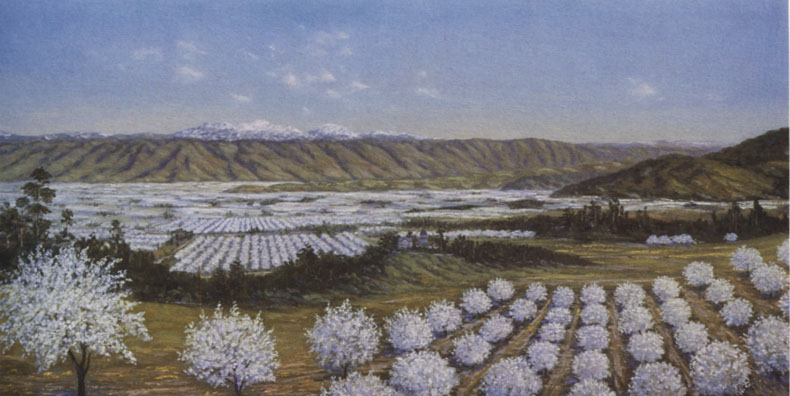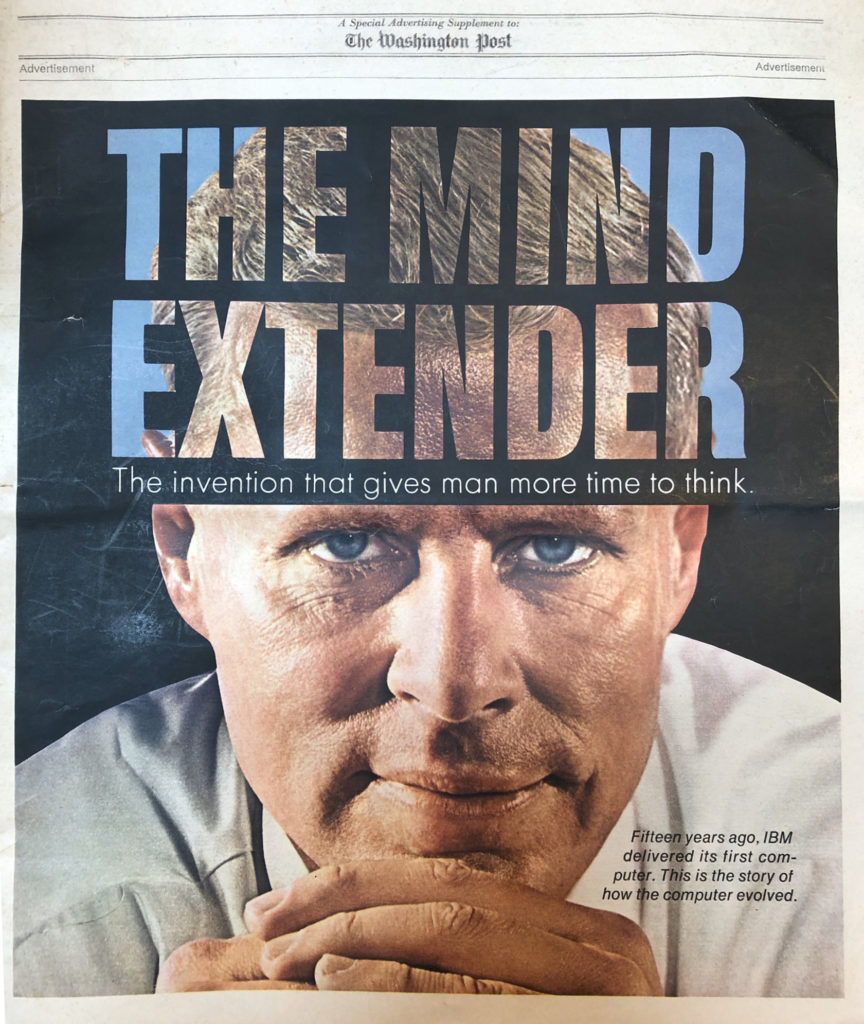Course Syllabus
Media Studies | 4-Week
O’ Pioneers! Reconsidering Computer History through the Legacy of the American West

Course Description
Computer history is not a timeline of factual events; it is a folktale that we tell ourselves and each other. This course will interrogate that folktale by examining it alongside another: the story of the United States’ expansion westward. We will uncover what our techno-culture has inherited from these familiar tales of rugged fortune-making, virtuous homesteading, and heroic individualism, the stuff of western films and adventure novels. Central to that culture is the myth of a promised (and uninhabited) land of opportunity. The images of ingenious nineteenth-century men embarking into, defining, and taming unknown territory persist in our stories of computing “pioneers” in the 1960s and beyond. It is a model which continues to shape not only how the American character is imagined, but also our lifetime’s electronic frontier and its tech entrepreneurs, code cowboys, and unicorn start-ups.
The course does not assume prior knowledge of either 19th-century U.S. or 20th-century computer history. Over the course of four weeks, we will encounter these histories through theoretical readings on the figure of the “frontier,” as well as in objects, curated collectively by us, that demonstrate the kinds of stories that the tech industry tells itself: advertisements from print ads to TV spots, press releases and congressional statements, “About Us” sections of websites, and manifestos by hackers and developers. Through these narratives, and with special consideration to gender and race, we will strip away the rhetoric of Silicon Valley and ask: what are the repercussions of U.S. expansionist myths persisting in tech today? For whom is this expansionist imagination (and thus our future) designed?
Texts & Media
Secondary readings will consist of excerpts from scholarship and popular nonfiction. These will cover either revisionist methods for studying histories of the American West or alternative histories of the tech industry. These may include, for example, Patricia Nelson Limerick and Richard White’s The Frontier in American Culture (1994); Lisa Nakamura’s “Indigenous Circuits: Navajo Women and the Racialization of Early Electronic Manufacture” (2014); John Markoff’s What the Dormouse Said: How the Sixties Counterculture Shaped the Personal Computer Industry (2005); Steven Levy’s Hackers: Heroes of the Computer Revolution (1984); and Michael Lewis’s The New New Thing (2014). In some cases, readings will be students distributed among students based on areas of interest.
Additionally, we will incorporate creative works as forms of social commentary; this may include (excerpts from) memoirs from inside the industry—from Tracy Kidder’s groundbreaking The Soul of a New Machine (1981) and Ellen Ullman’s infamous Close to the Machine: Technophilia and its Discontents (1997) to Anna Wiener’s just-published Uncanny Valley—and popular culture texts like The Social Network (2010, dir. David Fincher), AMC’s Halt and Catch Fire (2014-2017), and FX’s Devs (2020). The actual list of readings and films will not be finalized until the first day of class in order to consider student input. Students will not need to purchase any books, but they may be asked to rent films.
Activities
The course is essentially one long and collaborative curation and annotation project. The idea is that we will, as a class, collect a bunch of media objects which represent “the stories that the computer industry tells about itself”—advertisements, About Us sections of website, press releases, etc.—into a single repository, and then mark up some of these media objects with commentary.
Curation will occur via Wakelet, and annotation will be done using either Hypothes.is or Scalar, depending on the form of media. The idea is that the class will collaboratively curate the collection, deciding not only on which ones to annotate, but which ones to eliminate. Students will annotate together and individually. By the end of each week, at least one media object will have become both the object of semiotic analysis and an anchor for larger conversations informed by the readings and viewings.
Sample Annotation Activity

One week, we will use Hypothes.is to collaboratively annotate a newspaper advertisement (for example, the one pictured and linked to the left). When navigated to the media URL and logged into the browser add-on, anyone part of the private Hypothes.is group can insert comments and media (upload images, etc.) tagged to textual elements in the media object, and also comment on those comments. These comments are then saved, indefinitely, to this unique URL, a record of the class’s conversation.
The platform for this exercise is still pending, as Scalar is considered.
Projects
The activities can be broken up into three categories.
Weekly Class Annotation: Each week, everyone in the class will add annotations (written analysis and other media) to the same media object, an advertisement, commercial, or About Us section predetermined by the instructor or the class (by vote). This will include annotations made both synchronously and asynchronously.
Collective Curation: By the third week of the course, everyone will have added to the class’s shared Wakelet a generous number of media objects which represent ways in which the computer industry represents its identity or history. These can include print advertisements, screenshots of banner ads, commercials, other promotional materials, or anything else that students feel would belong in this category. The class will then, as an editorial body, peer review this collection and select which objects to annotate for the rest of the course.
Individual Annotation: In addition to the annotated media produced by the course together, each student will annotate an object of their choice on their own. This object must be part of the curated Wakelet (described above).
Schedule (4-Week)
Week 1: We will beginning by introducing the course assignment structure and class curation project, signing up for online tools, and getting to know each other. I will give a brief lecture on computer history, 1890s-1950s (especially Herman Hollerith, uses of tabulating technology, and the rise of IBM). We will then read Frederick Jackson Turner’s “The Significance of the Frontier in American History” (1893), related articles, and begin the curation and annotation projects in class, together.
Week 2: Using Tracy Kidder’s Soul of a New Machine, Evan Ratliff’s reflective review “O, Engineers!” (Wired, 2000), John Markoff’s What the Dormouse Said, and Lisa Nakamura’s work on indigenous labor in tech, we will begin to talk about the computer history of the 1960s and 1970s, paying special attention to how U.S. imperial history persists. Together, we will annotate IBM print advertisements from the era and share our first efforts of the curation project. We will then vote on which media objects to use for the rest of the collaborative annotation projects.
Week 3: Next, we will move into the 1980s and 1990s. We will read multiple articles and manifestos on the “electronic frontier,” an excerpt from Steven Levy’s Hackers, an excerpt from Ellen Ullman’s Close to the Machine, and some recent writing on race, class, gender, and the internet. We will also watch selected episode(s) from Halt and Catch Fire and annotate, together, the media objects selected in Week 2 (maybe AOL and Apple ads).
Week 4: We will return full circle to Silicon Valley and the new American West, watching The Social Network and maybe Devs, and reading excerpts from Anna Wiener’s Uncanny Valley, Michael Lewis’s The New New Thing, and additional readings on bias in algorithms. Together, we will annotate another media object of our choice, this time something related to Facebook (or the like). Then we will all present our independent annotation projects and finish the class curation.